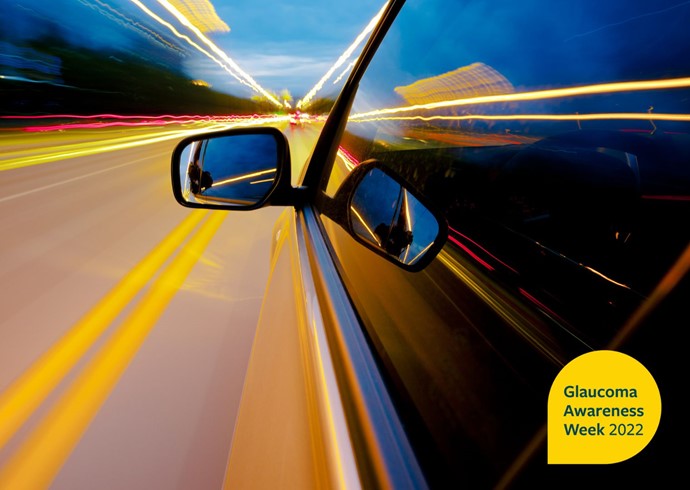Glaucoma and Driving - Glaucoma Awareness Week 2022

This week is Glaucoma Awareness Week and therefore this is a good opportunity to raise awareness about glaucoma, which unfortunately remains the leading cause of irreversible sight loss in the UK and worldwide. The main reason for this is the lack of symptoms with early to moderate glaucoma and hence the importance of early diagnosis to best prevent future glaucoma-related vision loss.
Treatments for glaucoma have continued to improve over the last decade and now we have more treatment options than ever before. There has been a paradigm shift in the treatment of glaucoma with selective laser trabeculoplasty now being offered as a first-line treatment to suitable, newly diagnosed glaucoma patients in preference to the use of long-term glaucoma eye drops.
One of the major concerns that glaucoma patients have is how glaucoma will affect their driving and their eligibility to maintain their driving licence. I hope this newsletter provides a useful summary of the current DVLA requirements for driving in patients who have glaucoma.
If you have glaucoma in both eyes, you must declare this to the DVLA. You do not need to tell the DVLA if you are diagnosed with glaucoma in one eye and your other eye has a normal field of vision.
If you have ocular hypertension (raised eye pressure without optic nerve damage or visual field loss) you also do not need to inform the DVLA.
If you are unsure about whether you need to inform the DVLA your ophthalmologist will be able to provide you with the relevant information.
The DVLA will organise eye tests at appropriately selected optometry practices across the country. The DVLA eye test will consist of both testing the distance vision, as well as the field of vision.
For distance vision, with glasses or contact lenses, if required, you will need to have a visual acuity of at least 6/12 and be able to read a standard car number plate at 20 meters. 6/12 means that you can see at 6 meters what a person with normal vision can see at 12 meters.
With regards to the visual field requirements, a driver should have a good peripheral field of vision in both eyes with no significant defect in the central vision. More specifically, with both eyes open you should have a horizontal field of vision of 120° with at least 50° on either side of the central field of vision. There should be no significant field defect within the central 20° of the field of vision. The field of vision test that you perform for the DVLA is with both eyes together, which is different to the test you normally have with your ophthalmologist, which usually checks each eye independently. What is reassuring is that the eye and brain work together to fill in the field of vision defects very effectively, although it is not until you have had the DVLA test can you be entirely sure you reach these requirements.
I know that maintaining a driving licence remains very important to the majority of patients with glaucoma and I do hope that this newsletter provides you with the up-to-date information required for driving.
If you are unsure, you should always ask your ophthalmologist who can give you further advice.
